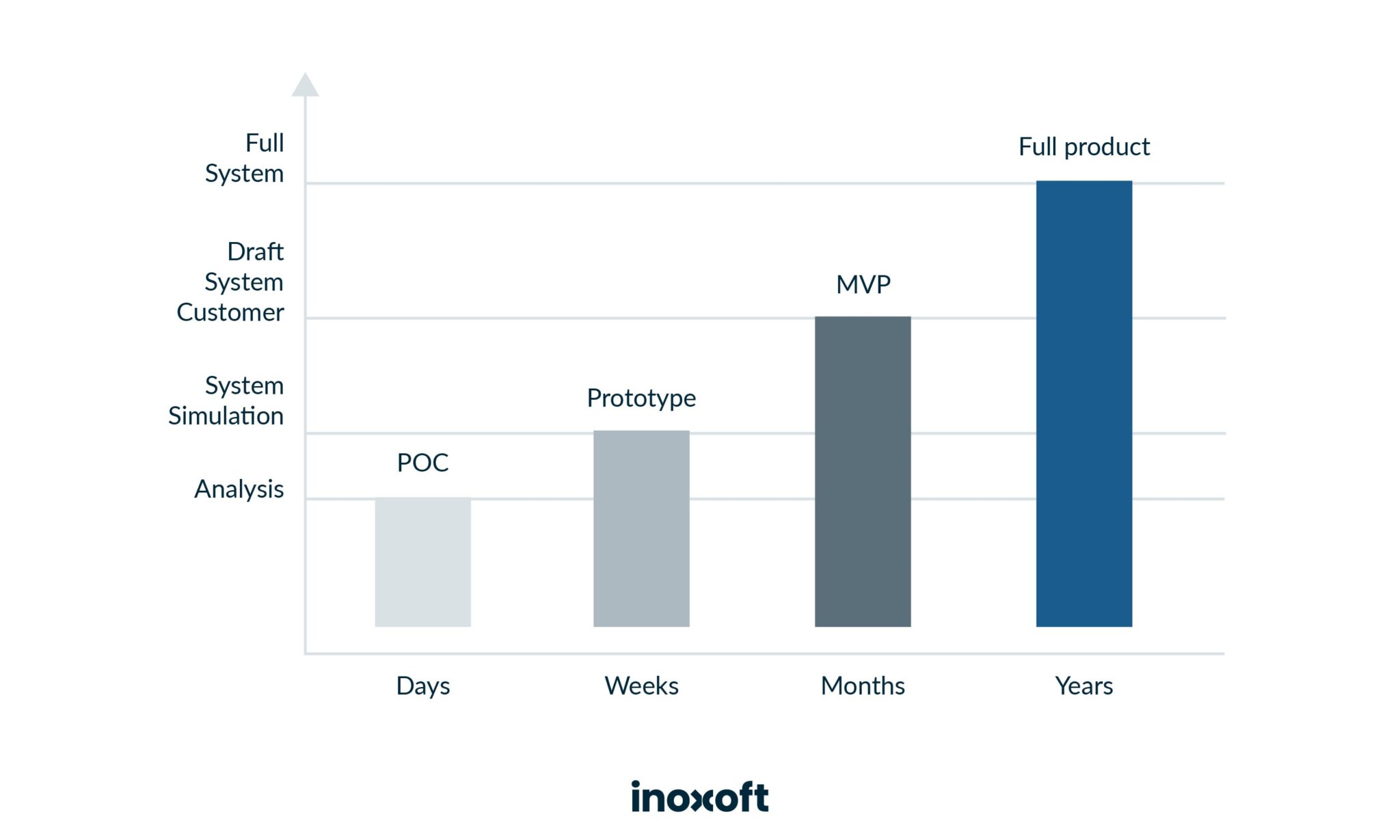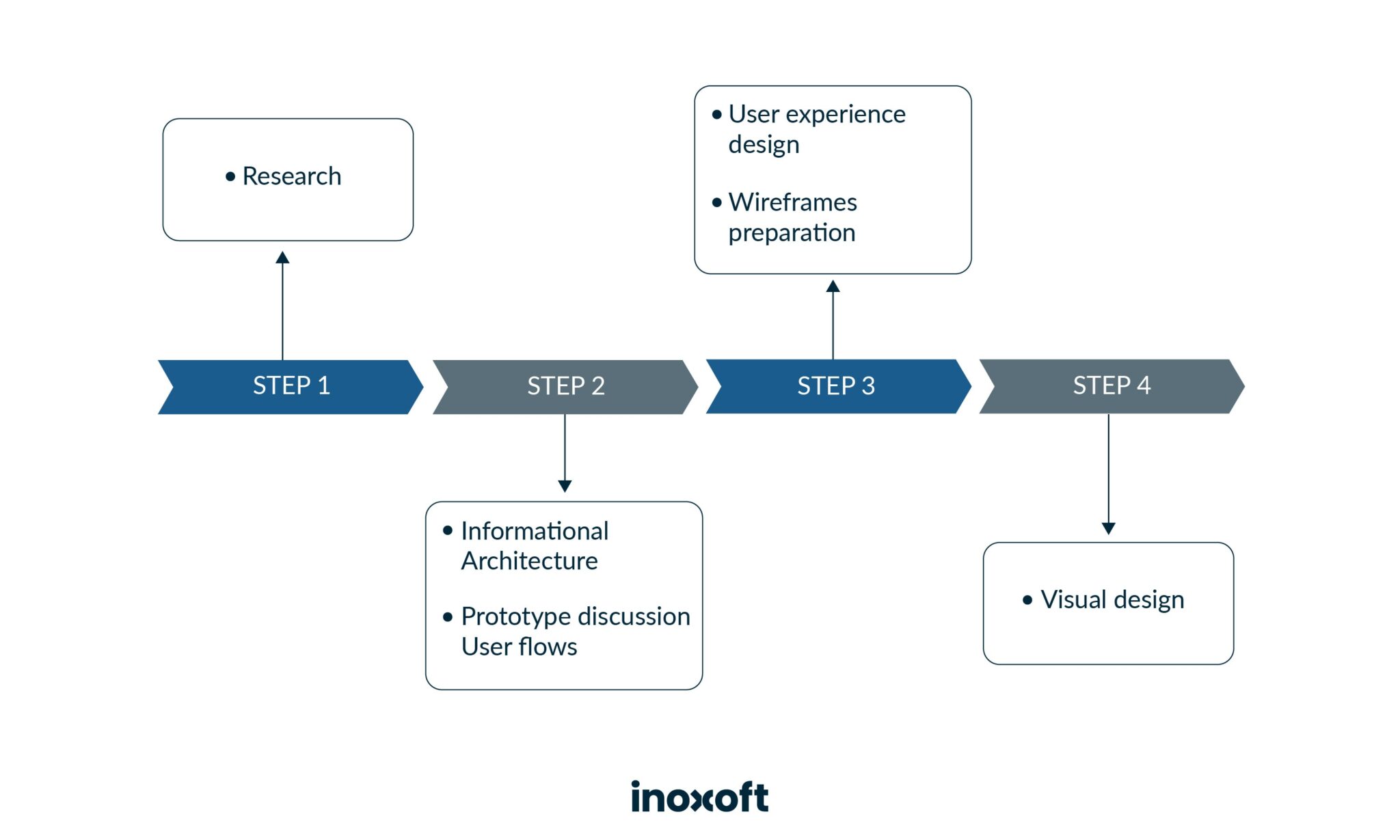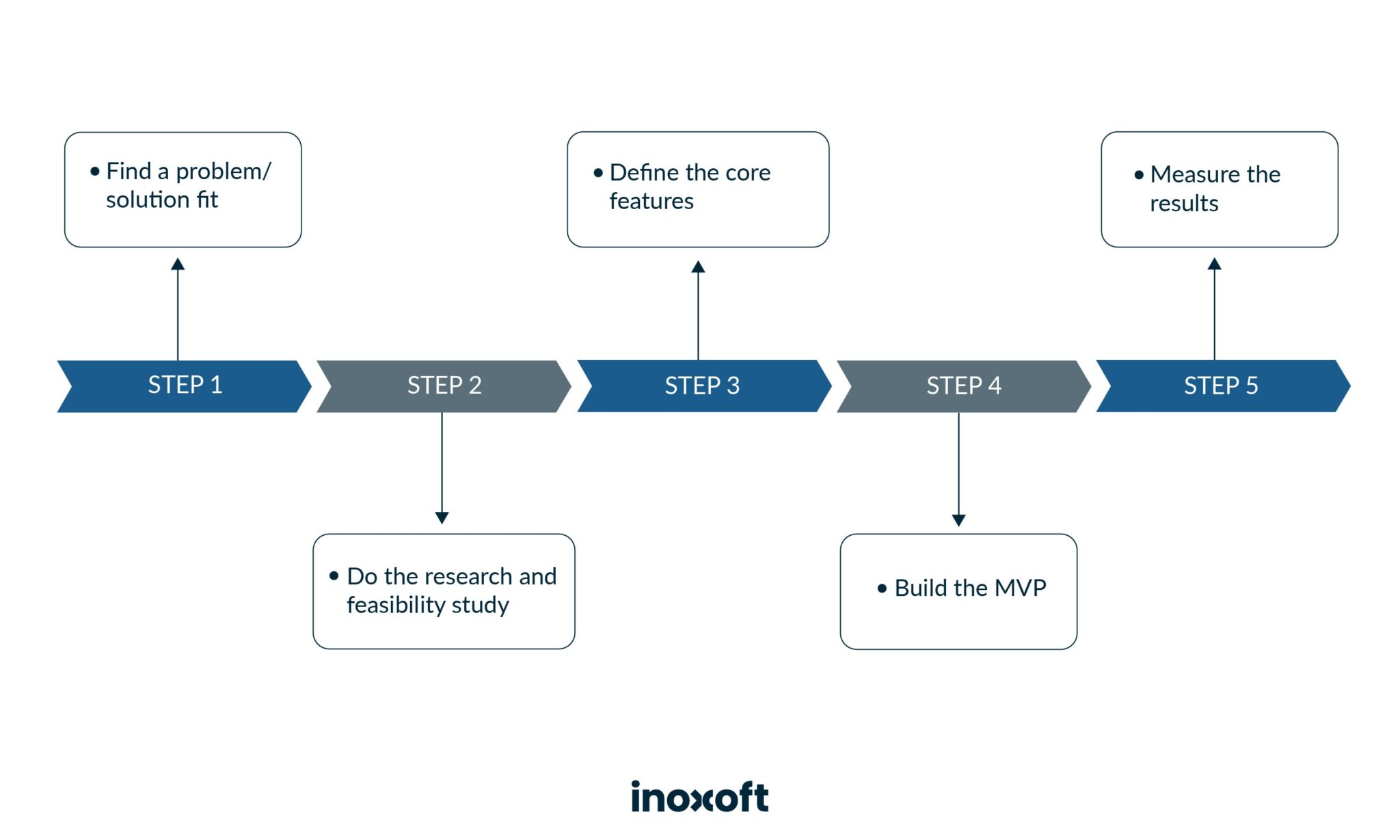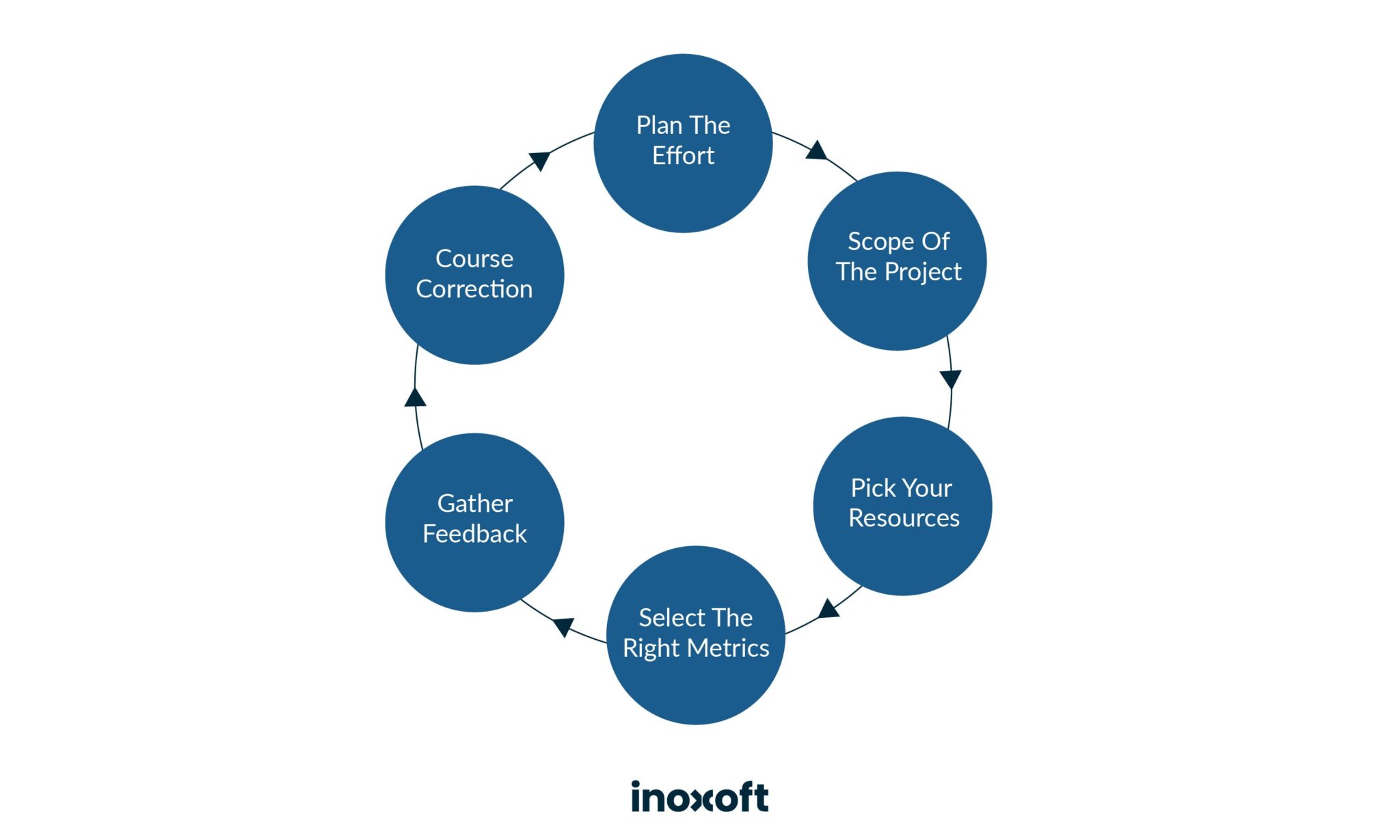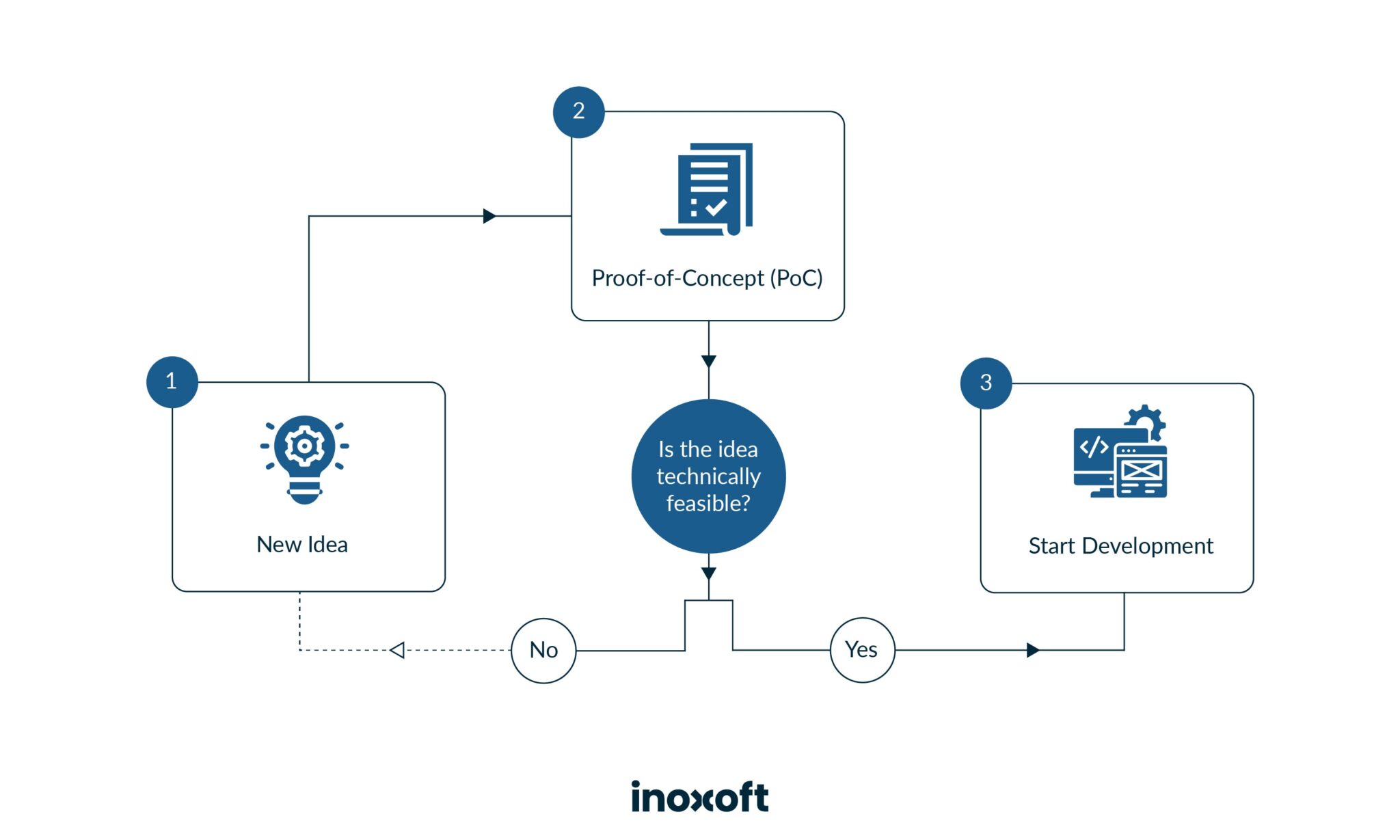You should not underestimate the proof of concept in software development as it might set the right course for your app production. If you are a startup or a business that has an idea spinning for quite a while, PoC is exactly the discovery phase services approach you should choose to succeed. Surprisingly, the main purpose of a successful PoC is not to design a fully functional software for you. It aims to prove by PoC in programming that the idea you have will be useful and in-demand.
PoC in software development is a risk-free experience that will be of great advantage to your business as it is among the best practices and software development methods.
So, what is proof of concept in software development? How to create it? Here is the ultimate guide to ensure your business idea is a success!
- What is PoC in Software Development Practices?
- Proof of concept
- PoC vs prototype
- PoC vs Minimum Viable Product
- PoC's Advantages in Project Development
- Assessing technical feasibility
- Initial verification of market needs
- Understanding product limitations
- Making rational budget decisions
- Accelerating the release
- How to Build a Software Proof of Concept?
- Detailed idea description and planning
- Setting up PoC project requirements
- Select the right team
- Choose metrics to test the idea
- Gather feedback from the key audience
- Correct the course of your business idea
- Proof of Concept in Action
- Consider Inoxoft Your Trusted Partner
- Final Thoughts
What is PoC in Software Development Practices?
PoC in IT is one of the most important types of software development models that are functional and may become life-changing in the desire to develop a smart IT project. So, let’s define PoC meaning in software development and why it is praised so much.
Proof of concept
Proof of concept is a short project that verifies a tech concept by delivering numerous simplified features, validating assumptions, and ensuring the concept is implementable or vice versa. The purpose of PoC is to produce a basic version of the product and understand whether the client’s idea or as it is also called – concept, can be technically feasible.
Usually, a PoC is a significantly small project that lasts approximately from 1 to 3 weeks. During this time its major aim is to:
- verify minor technical assumptions before starting the development phase
- show a small part of the product, not the full product
- be used for internal purposes only for the client to see
- obtain a clear yes/no answer on which way to go with the development
- be one step ahead of competitors with the idea tested and proven to succeed
If you are a startup or a small business you can start your application development from PoC in the following cases:
- If you need to make sure your idea can possibly work with regards to logic, clarity, and technical feasibility
- If you need to attract potential investments by making an innovative product and highly demanded on the market
PoC is not the only approach towards building the right product for your new or evolving business. For example, there are also Prototype and Minimum Viable Product app building techniques you can choose. But there’s a huge difference between these approaches.
PoC vs prototype
A prototype is a visualization of how an app will flow from one screen to the other. Also, it may be not only the screen that has to be visualized but a specific feature of an app. The aim is to find out how potential end-users will perceive it. Thus, a prototype’s role in app development is to be seen by the users, who can test it and write feedback. The end-users are the key players in the prototype’s validity or disapproval.
The prototype’s timeline encompasses from 3 to 6 weeks and depends on the scope of work to be done or the number of screens to be designed. Thus, businesses tend to build prototypes to:
- get early feedback on the product
- identify the design and development problem
- save more time- and costs compared to the full-stage development
- provide users with a better understanding of the product workflow
- make it easier to identify customer needs
- bring complex ideas in one comprehensive format
- be used again in the next, more complex projects
On choosing Prototype you have to have a clear necessity to:
- visualize how the product will look like and function
- attract investors with the product’s design and UX flow
- present the idea to stakeholders and investors within a short time
- show the product to the end-users for their approval before starting the actual development
- cover limited technical availability with a clickable visual
So prototype cannot be compared to PoC as it carries out another mission in software development and offers a different end result. The bonus of the prototype is in the ability to be extended to a minimum viable product based on it. So, it’s rather closer to MVP. What’s MVP here? Let’s define it as well.
PoC vs Minimum Viable Product
A Minimum Viable Product is a simple version of a product that has limited but enough features to stay viable and meet core functionality needs. Unlike PoC, it is a small functional feasible app that end-users get to meet and test.
MVP building lasts approximately from 3 to 6+ months, depends on the complexity of the project, scope of work, and aims to:
- get the minimum version of the product to the market
- get to know whether the product has any value at all
- start making money right away from the first customers
An MVP that is good and has an investor behind it can include additional features without being limited in its functionality. You should always choose MVP when you need to:
- have enough value that users are willing to use it or buy it initially
- demonstrate enough future benefits to retain early adopters
- provide a feedback loop to guide future development
- develop a product with a chosen set of features essential to cover users’ needs
- help prevent wastage of development costs, efforts, and time
- unveil the most efficient direction for further development
- help verify product viability and assumptions
- give an understanding of product usability and market demand
- allow getting a high retention rate with relatively small investments
PoC’s Advantages in Project Development
Of course, prototyping and MVP can give you better results if you’d like to know what is your target audience, whether they will like the app, how the engineered software functions, does it have a user-friendly UI/UX, and so on. But, PoC will ensure you that your idea is worthwhile and you can work a way out to make this idea into reality. Here are some benefits of PoC for software development:
Assessing technical feasibility
PoC allows project teams to test the technical feasibility of a concept before committing extensive resources. It helps in identifying potential challenges, technical bottlenecks, and risks early in the development cycle.
Initial verification of market needs
Before investing significant time and resources into a full-scale project, team can verify the market needs and validate the demand for the proposed product or solution. By releasing a prototype or a simplified version, developers can gather feedback from potential users or stakeholders, helping to refine the product based on real-world insights.
Understanding product limitations
PoC uncover potential limitations or shortcomings of a product early in the development cycle. This knowledge is invaluable for refining the project scope and setting realistic expectations. Identifying limitations in the early stages allows team to address issues before they become critical, reducing the likelihood of major setbacks during the later stages of development.
Making rational budget decisions
PoC is a cost-effective way to evaluate the viability of a project. It helps stakeholders make informed decisions about whether to allocate resources for further development based on the initial findings. By understanding the technical requirements and potential challenges through the PoC, project managers can make more accurate budget estimates and allocate resources strategically.
Accelerating the release
Through the insights gained from the PoC, the team can streamline the development process and accelerate the release timeline. Understanding the technical landscape early on allows more efficient decision-making and resource allocation. A successful PoC provide a clear roadmap for the subsequent phases of development, reducing the time-to-market for the final product.
How to Build a Software Proof of Concept?
A PoC, like any other software development concept project, has its own development flow. Hence, it includes the following proof of concept steps that might become your checklist in the future:
- Detailed idea description and planning
- Setting up PoC project requirements
- Select the right team
- Choose metrics to test the idea
- Gather feedback from the key audience
- Correct the course of your business idea
Detailed idea description and planning
For the PoC development team to understand what they have to work with as a part of the discovery phase of a software project, a client has to share all the details about his/her idea: e.g. What the final product should look like? What audience should it target? What aim should it pursue? What pain points should it resolve for the end-users? The team will be able to work with the gathered information and input PoC meaning only if they make a proof of concept plan.
Setting up PoC project requirements
The detailed description requires setting up specific goals for your concept, KPI’s, target audiences, and more so that it was easier to compare the end result with the set requirements and scope of work. If the scope of work is missing the stage-specific requirements, then it will never be viable. The more it matches the requirements of the stakeholders the better.
To ensure the software team of experts and the client are on the same page, everything that has been discussed according to the idea production has to be documented. Also, you may need to perform a roadmap development that is the process of proof of concept in software development building. It consists of iterations management and marks what has to be done first and what has to be done as a next step.
Select the right team
One of the biggest investments in PoC development is done by the project development team. A successful project plan has to consist of the right team and project manager. The latter will ensure constant support in PoC initiation, sticking to the PoC document criteria. Also, they have to provide you, as a client, with PoC software you have expected to see. Thus, your vision should match the vision of your team. For this reason, choosing the right outsourcing vendor is a priority.
Choose metrics to test the idea
The stage of testing and idea evaluations allows to test the client’s idea internally among the assigned users, receive potential feedback and analyze it. Here, the feedback will be critical as only it can show whether this idea is practical, can meet user’s expectations, and does this quite well. Also, among the other things, the data obtained will show you whether you’ll meet the budget and gain profits if you decide to get into the development stage.
Gather feedback from the key audience
This stage marks the tipping point of the concept as it analyses everything achieved and makes a verdict on whether the idea is feasible and the client can work with it to design an MVP or the full product, or whether the client should focus on something else. In any case, the client won’t risk losing time, money, and effort as everything he/she needs to know will be perfectly documented up to the future product outcomes.
Correct the course of your business idea
This stage will show you the pluses and minuses of your idea and its future impact. Here, you will be completely aware of which way to go next: enhance the product, hear out expert recommendations or abandon the idea.
Read more: creating prototypes for startup product design
Proof of Concept in Action
One of the most prominent examples of PoC implementation is Walmart’s collaboration with IBM to use blockchain technology for enhancing the traceability of products in the food supply chain. In partnership, the retail giant conducted two separate PoC projects – one centered on tracing mangos in U.S. stores, and the other on tracing pork in China.
The blockchain-powered solutions allowed Walmart to expedite the tracking process and swiftly identify the origin of products in case of issues. Despite its technological success, skeptics raised concerns about the reliance on human-input data, suggesting the potential for errors or fraud. The primary objective of this solution was to enable rapid response to food-borne disease outbreaks, showcasing how PoC can address critical challenges in real-world scenarios.
Consider Inoxoft Your Trusted Partner
Inoxoft is a software development company that offers different types of services. We provide excellent custom mobile app development, and web development services, and even more. Inoxoft knows how much efforts business owners put into launching a startup or conducting a profitable business, and we know how to scale a startup or help your business grow.
If you have an idea but are hesitant whether it might work, consider our discovery phase services and expert consultation from our skilled software engineers. Requesting PoC as a part of the discovery phase is well-thought and puts both the company and the client on the same page to understand whether the concept under discussion will be a success.
Also, Inoxoft knows how hiring developers for startup can be a long process and we can offer you to hire offshore development team of our own that will bring you excellent solutions and add to your business’ growth.
Inoxoft has 8 years of experience in the software industry and had the chance to offer PoC implementation, minimum viable product development, and more solutions to clients all over the world. Contact us to learn more about PoC and the potential of the discovery phase development with our certified developers.
By choosing to develop a software proof of concept you risk losing nothing at all. On the contrary, if the idea is feasible, you will win and continue enhancing this idea into a fully-fledged MVP. However, in case your idea is not feasible, you will have the chance to think it over. Or, even, come up with a new solution to implement. Here, software development proof of concept is your greatest strength in conducting a business.
Final Thoughts
Software project proof of concept development has so many advantages at its sleeve. First, it is a good idea validation method that will give a direct answer according to the product’s viability and feasibility. Second, it will require you minimum investments to receive maximum software development PoC benefits. Third, if your idea happens to be quite good and has a strong potential to become a popular platform among users, with PoC you will receive a template for your future engagement in the development processes. So the choice is yours.
Frequently Asked Questions
What is PoC in software development?
A prototype is a visualization of how an app will flow from one screen to the other. Also, it may be not only the screen that has to be visualized but a specific feature of an app. The aim is to find out how potential end-users will perceive it. Thus, a prototype’s role in app development is to be seen by the users, who can test it and write feedback. The end-users are the key players in the prototype’s validity or disapproval.
Why should you develop a software project proof of concept?
Usually, a PoC is a significantly small project that lasts approximately from 1 to 3 weeks. During this time its major aim is to:
- verify minor technical assumptions before starting the development phase
- show a small part of the product, not the full product
- be used for internal purposes only for the client to see
- obtain a clear yes/no answer on which way to go with the development
- be one step ahead of competitors with the idea tested and proven to succeed
How to create proof of concept in software development?
The PoC development stages are:
- Detailed idea description and planning
- Setting up PoC project requirements
- Select the right team
- Choose metrics to test the idea
- Gather feedback from the key audience
- Correct the course of your business idea





